Take a look inside Italo Brutalo's analogue synth paradise
German synth hoarder Italo Brutalo shows Danny Turner around his analogue haven

Captivated by his father’s home recording studio, Vincent Fries soon found himself eschewing schoolwork in favour of experimenting with an old Akai S3200 sampler.
Evolving into a skilled DJ, at one point earning the nickname the ‘three-armed bandit’, Fries’ reputation as a producer grew steadily throughout the 2000s. However, it wasn’t until 2009 that he would discover Italo disco and reorient his sound.
Renamed Italo Brutalo, the German has finally completed work on his debut album, Heartware, which chronicles a lifetime of generic influences with upbeat, off-piste diversions into electro, disco, Italo house and hip-hop.
Fries’ sound is cultivated from a catacomb of analogue gear collected over a 25-year period, much of which is studiously summarised on a supplementary 12-page album booklet that pays homage to Fries’ personal relationship with his army of machines.
Tell us about how your father introduced you to the world of electronic music equipment…
“My father is a guitarist and had a home recording studio with a four-track tape recorder and a Yamaha RX-5 drum machine. He was the first person to bring my attention to such equipment and from the age of five I was fascinated by the RX-5’s huge variety of broken glass, shouts and drum sounds. There are advantages and disadvantages to having parents who are familiar with music – when I started scratching and making hip-hop music in 1992 there was a clash of generations, but overall I am very thankful to them.”
Were you more fascinated by the instruments themselves than electronic music per se?
Want all the hottest music and gear news, reviews, deals, features and more, direct to your inbox? Sign up here.
“When I first heard Public Enemy it was amazing to hear the sounds they had in their tracks. I had no idea how to make them, but was super into gear and fascinated to find out how this music was produced. As a result, I was totally bad at school because I was on my sampler all the time and all I wanted to do was to make my own music.”
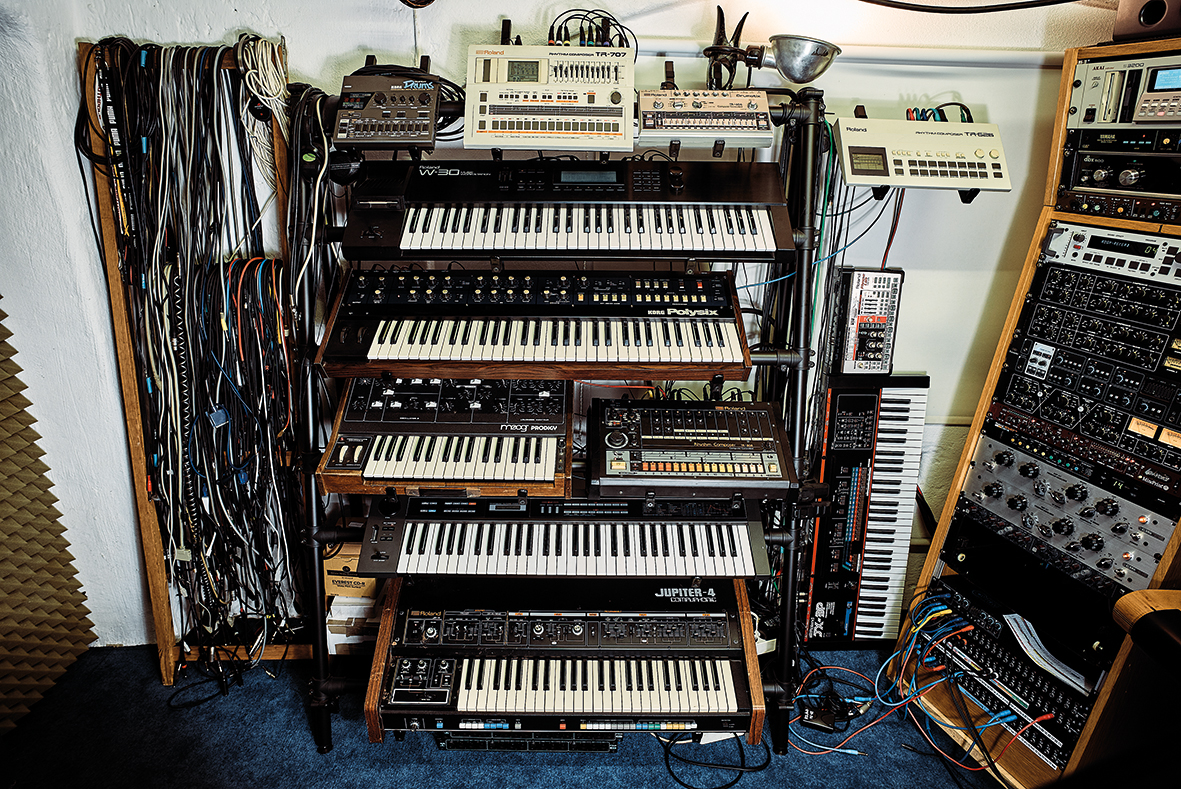
Your name Italo Brutalo obviously seems to refer to Italo disco music…
“I’d heard Ryan Paris’ Dolce Vita and other commercial tracks but didn’t realise that Italo disco was such a huge universe until I read about the genre in a magazine in 2009. The article described how it was made and the machines that the musicians used and I suddenly realised that I had all of those machines in my studio. That’s when I started to make Italo music in the way that I thought it should sound.”
Italo Brutalo is now your main project and your first recordings appeared in 2009. What sort of music were you making prior to that?
“I made some productions when I was very young – we had a hip-hop band and we released our first record when I was 16 or 17. Then I had several aliases and made a lot of house, drum & bass and hip-hop. At first, Italo Brutalo was just a fun side project that came from a joke in the studio with a guy from Italy, but yes, now it’s my main project.”
When did you get serious about ‘vintage’ gear?
“A friend of mine lent me my first sampler when I was 16, but I didn’t have much money and soon found another very cheap secondhand one in the local newspaper for around 150 Deutsche Marks. About a week later I sold that for 400 DEM and bought a cheap Roland MC-303 Groovebox, which I then sold for 600 DEM. So I was always buying, selling and upgrading my gear. In those days, you needed a lot of equipment because there were no computers. If you wanted the sound of a delay you needed to buy a delay unit and if you wanted reverb you needed a reverb machine.”
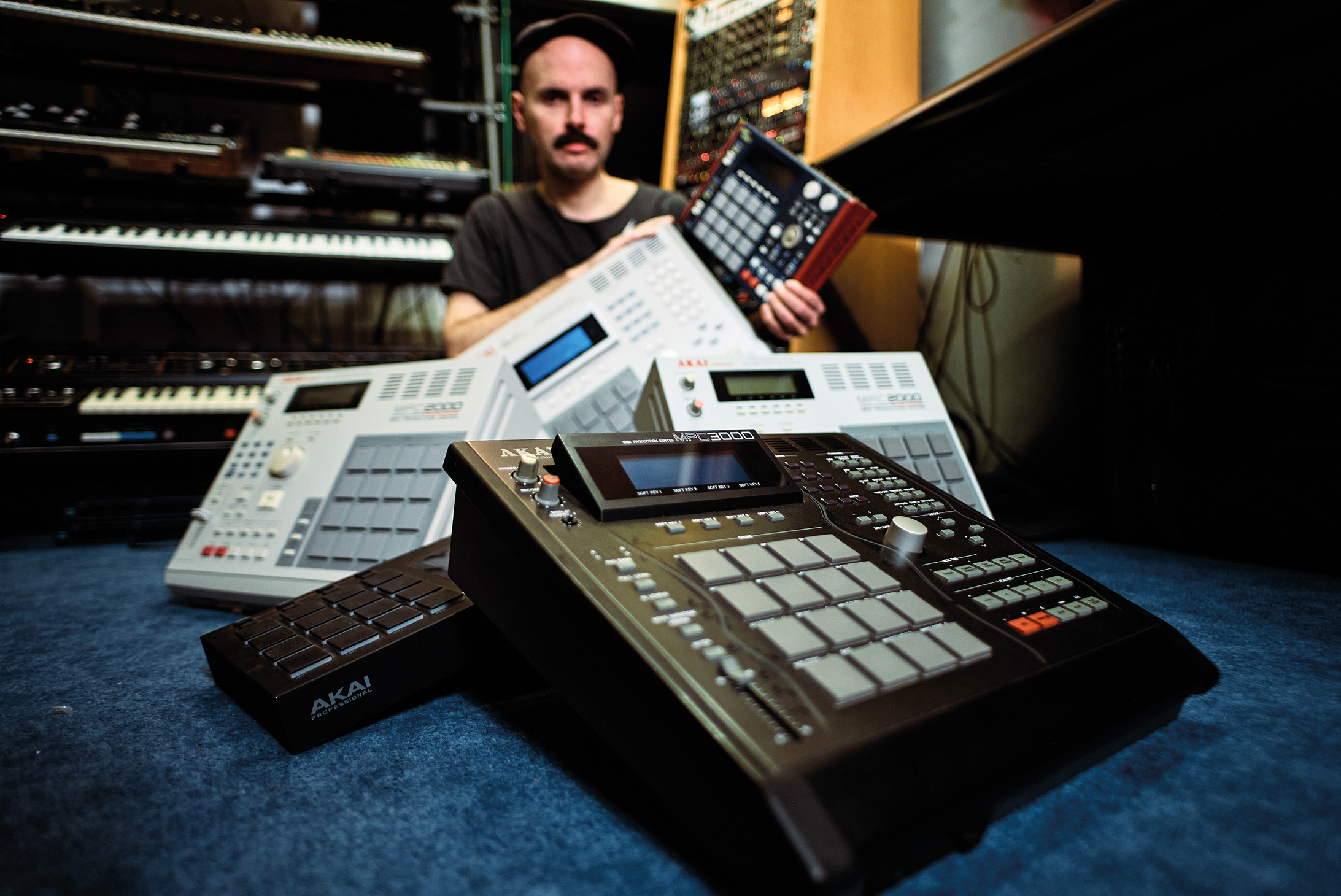
We understand that the Akai S3200 sampler was quite important to you?
“That’s my baby and I still use it a lot. In the early days I used it to record stuff from records using a microphone and friends who played guitar and other instruments, and I also sampled my own synthesisers. My first synth was the Roland Juno-106 and the reason I sampled it was because the Akai had more modulation functions so I could manipulate the sound further. Of course, I was also able to save the sound and it was totally inspiring to be able to record onto the Akai and cut and edit everything. It’s probably hard for kids today to get the point because they can easily record stuff and make amazing videos on an iPhone, but back then it was so fascinating to edit audio and pitch it up and down.”
To what extent have you gone under the hood and adapted gear to your needs?
“I’m not a soldering pro, but I did do some modulations with DJ mixers back in the day because they were very basic. The best thing I did was to build something that enabled my mixer to send trigger signals. But if you’re going to experiment, it’s always best to do it with something that’s cheap, like effects gear, so it’s not a huge drama if it gets damaged.”
In what way does your debut album Heartware play into your love of hardware gear?
“My girlfriend is a graphic designer who works in a very minimalistic way. When she first saw my studio she didn’t like all of the equipment so I wrote a love song for her called Heartware because I wanted to find a nice title that sounded better than ‘hardware’. I also love all of my gear – even if it often gets broken – so the title pays homage to that too.”
The album doesn’t seem to be guided by any one genre, including Italo disco…
“I started working on the album in June 2021 and made so many different kinds of demos because it doesn’t feel natural to me to spend months making the same style of music. On this record there’s some broken beat stuff and slower music more related to hip-hop and trip-hop, and because I was a breakdancer and graffiti writer in the ’90s I rediscovered my love for electro music and artists like Egyptian Lover and Jonzun Crew. I still love all of that, so some of the tracks have incorporated those influences alongside EBM and industrial from the ’80s because I loved the synths and the hardness of those tracks.”
What gear was particularly instrumental to the making of Heartware?
“I used hardware synths like the Korg Polysix, the Juno-106 and Jupiter-8, plus the Roland TR-808 for drums and the Roland SVC-350 vocoder on tracks like Heartware and Nobody Moves. At the end of the process I’d always turn to my Akai sampler, which is full of sounds that have been programmed in, and then I sequence them. For example, the Juno-106 is a great synth but it has some limitations, so I’ll do some basic edits, programme sounds into the Akai and start editing from scratch. Basically, where the Juno ends the sampler starts. It would probably be easier to record into Cubase and edit all the sounds from there, but I like the process of touching and turning the wheel of the sampler and pushing buttons. For me, touching an instrument gives me a better connection to a sound than clicking with a mouse.”

You’re clearly a fan of using effects units to further shape the sounds you’re working on…
“About 10 to 15 years ago I discovered that a lot of my sound design is made by effects units. I really love the old ones and tend to buy everything I find, even if it’s cheap and has no name because they often bring something unique to the sounds coming from my synths and samplers. My father had a Roland SRE-555 Chorus Echo and that became my very first echo machine. It’s at least 40 years old and I probably need to clean it, but I totally love its distorted, wobbling sounds. Most people use Urei or Universal Audio compressors, but I’m a fan of the Drawmer sound and have a couple of their compressors. One is called a Drawmer 1960 and the other is the Drawmer 1973.”
With so much vintage gear at your disposal, did you want your debut album to take a bit from everything?
“At the end of the day, it’s about just making a good song. For example, the track Into a Sampler was based on a demo I’d made five years ago and was edited, cut and sequenced on an Akai MPC-3000. The song Dream Machine was made just with an Akai MPC-2000 that was sitting next to my DJ setup in my girlfriend’s flat. For songs like Heartware or Nobody Moves, I used lots of different synths and played around with a lot of gear until I hit the right spot. Every track had a different process, but at the end of the day it’s not important whether I’m using 10 vintage synthesisers or one, as long it’s a good track.”
Does software play any role in your production process?
“I use it for sidechaining and some basic automation functions and noise gating but I don’t have that many plugins and tend to only use very simple ones, so the computer doesn’t really play any role in my creative process. When it comes to the mixdown, I record everything into Cubase and use it like a huge hard disk recorder.”
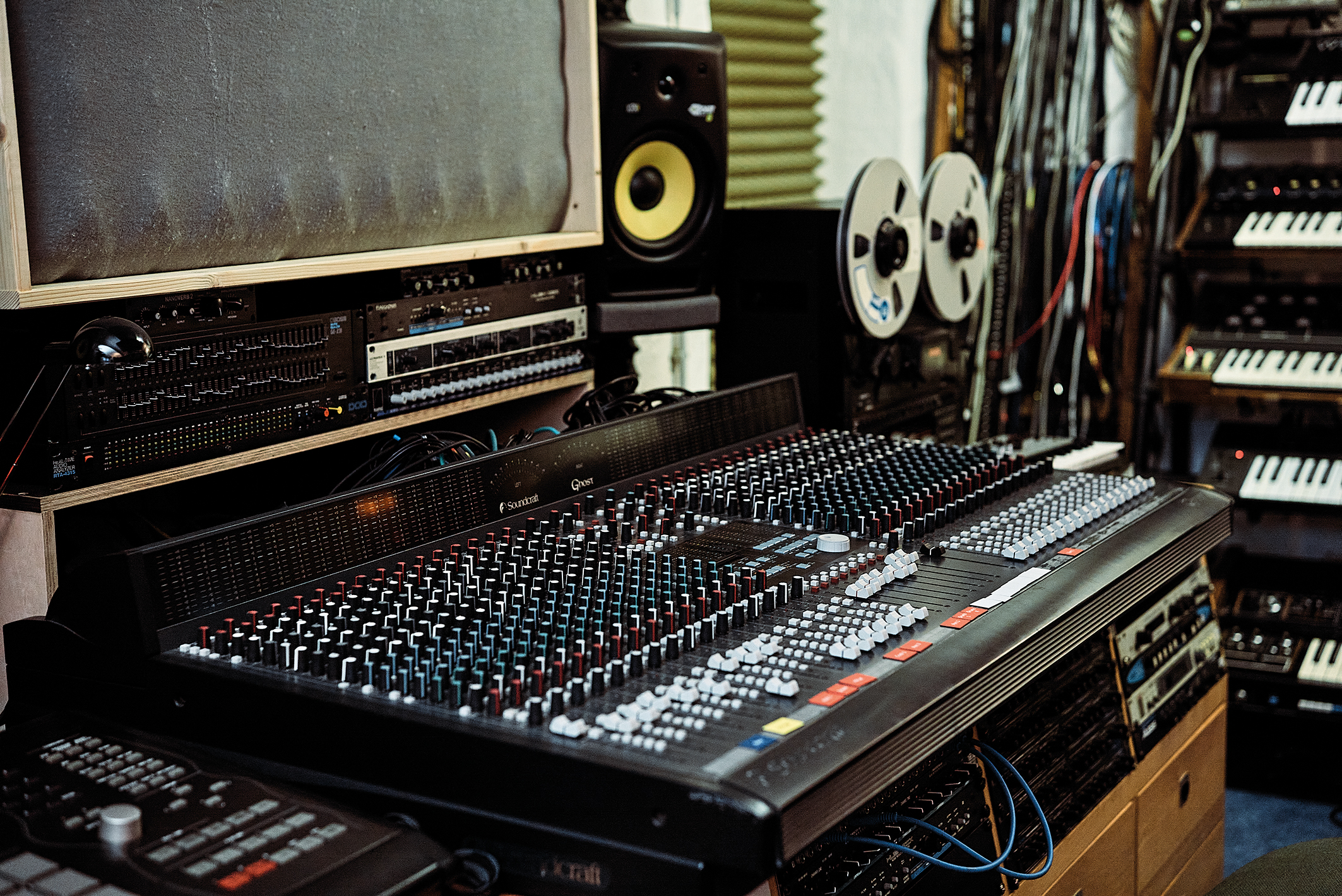
Can you tell us about some of the more exotic pieces of gear that you own?
“It’s a good question, because in 2022 I get the feeling that everybody knows everything and there’s no super rare studio stuff anymore. When it comes to effects units, there are some brands from my home region of Lower Bavaria like Dynacord. The company is not very famous; it’s known for making PA systems and speakers, but they also made drum modules and a sampler in 1989 called the ADS.”
Do you have any other Dynacord gear?
“They made some very cool effects units like the MDL-10, which is a very basic digital delay that was inspired by the Ursa Major Space Station signal processor. You can’t make exactly the same sounds and it’s a little noisy, but it has a very warm sound to it that I totally love. There is also a company called Solton who are the makers of a very cool delay unit called the MDD-1500H that has a dual delay function. When you press the button it doubles the length of the delay time and because that reduces the sampling rate it sounds like a bitcrusher so you can make these really noisy, distorted sounds and warm echoes.”

You have an E-mu Emax 1 synth/sampler, which we believe was used quite a bit by Depeche Mode?
“Not just a bit, I think they used it a lot [laughs]. It’s a 12-bit mono sampler with a chorus function, but if you just listen to the main output, the sound is so wide and huge that you could almost compare it to my Jupiter-8. I bought the Emax 1 over 20 years ago and have a few hundred disks with sounds. I love buying floppy disks and still work with them a lot – they’re probably my main saving medium. For the song Into a Sampler, all of the sounds fitted onto one 1.5MB floppy disk because I only tried to use very short samples.”
You have a huge collection of Roland synths and that acid sound comes through on the track As Above So Below?
“I programmed all the patterns on the TR-808 and that took quite a long time. To be honest, I used it in a very basic way, but if you listen to the track Heat of the Knight I used the 808 for drums but mainly triggering other synths. For example, in trigger mode I used it to programme arpeggios on the Korg Polysix. What I liked about that process is that it’s 75% programming and 25% random because when you press three notes at once you never know which one is being triggered first.”
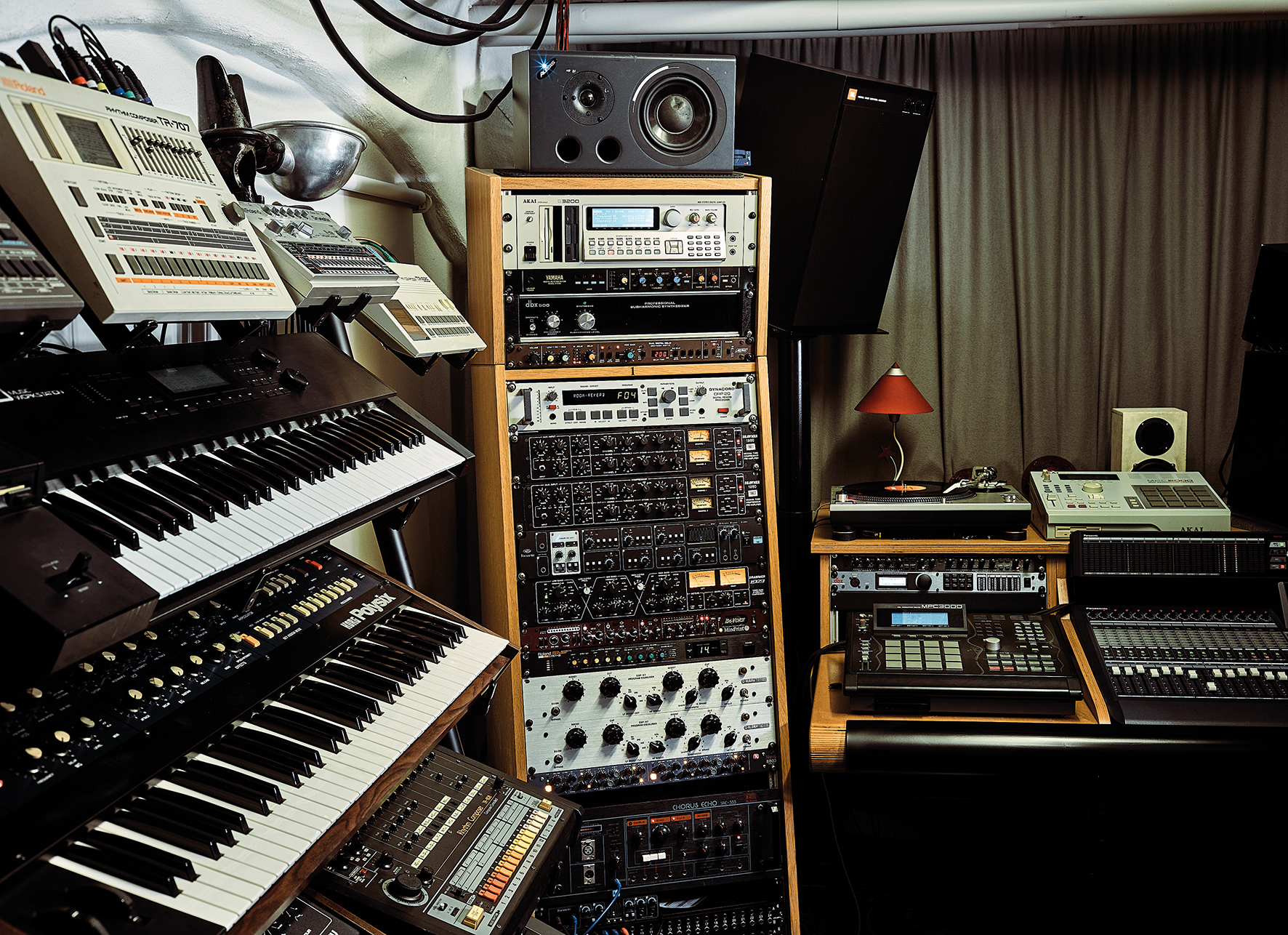
Being such a student of analogue synths, it’s perhaps surprising that you haven’t got any modular gear…
“That’s because I know myself and how I started by swapping lots of different synths and samplers. Over the past year I have often thought about checking out certain modules and I love going to Superbooth in Berlin and talking to people who use all that stuff, but I’m afraid that if I keep buying modules I won’t make or release any music. Two months ago, I did buy my very first Eurorack effects module, which, ironically, is called the Apollo View Rabbit Hole. It’s a very musical distortion unit and I deliberately bought a very small case to prevent me buying other modules.”
Are there any particular pieces of vintage hardware that you’re still on the hunt for?
“I don’t want to sound arrogant but I’m totally happy with the stuff that I have here. I’m not a collector, but I have my MPC-3000, the E-mu SP-1200 and synths like the Jupiter-8, Jupiter-4, Minimoog and PPG Wave and they’re not just standing around in the corner. I’ll make a track with a Jupiter-4 or a Polysix and after a while get bored and switch to a Roland W-30 or Moog Prodigy, so I’m always rediscovering my synths and that helps to keep things fresh. Maybe it would be nice to have a Yamaha CS-80, but it would probably cost €100,000, which is kind of ridiculous.”
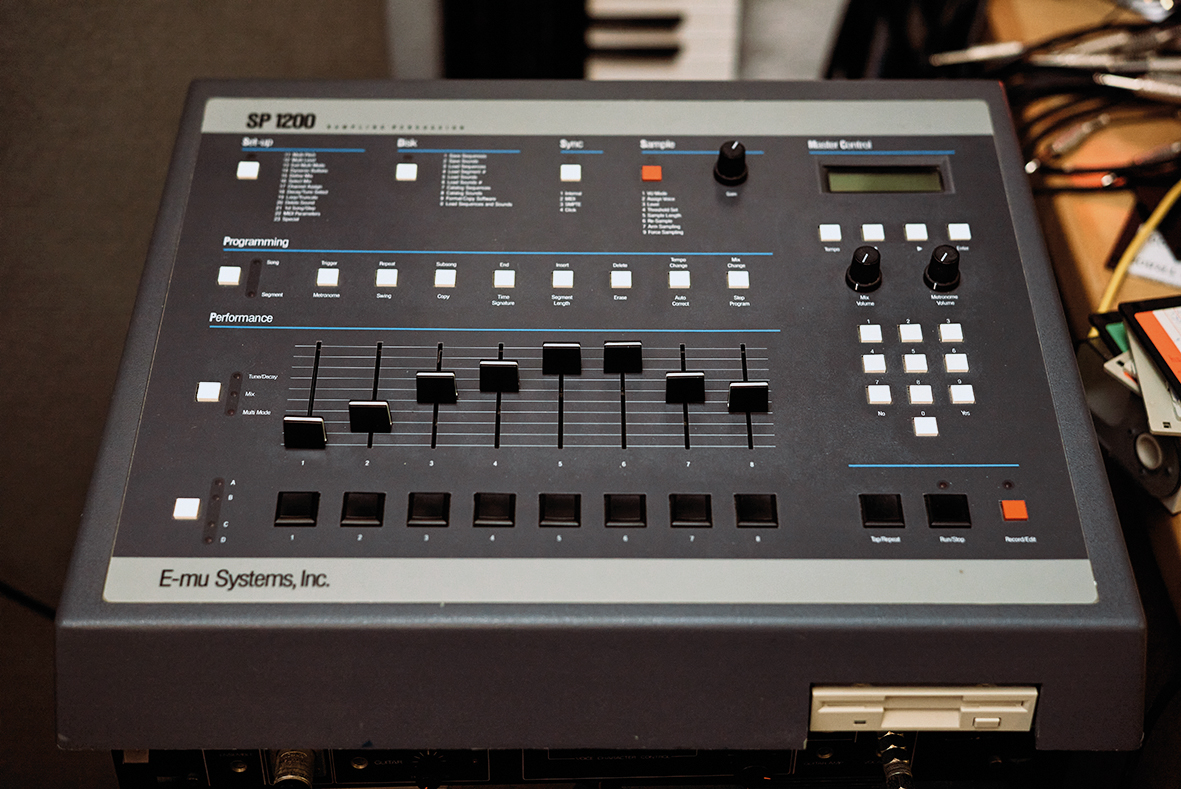
The album comes with a 12-page booklet that takes people into your studio world. What gave you that idea?
“I like the idea of giving people the chance to understand what I’m doing and thought of making a nice booklet with pictures of my very favourite machines. The Tascam 244 four-track recorder was always quite important to me and I wanted to show some respect to these machines that have shared my journey over the past 25 years and helped me to become the artist I am today.”
Would you like to see similar effort made by artists to supplement their music in this way?
“I used to love getting hold of records or CDs that had a nice booklet. That was very important back in the ’90s with no internet and very few magazines available in the small German town where I lived. When I got a CD or record I always opened and read the booklet from the first word to the last to see what equipment they used and I knew that I wanted my debut album to have a huge booklet to show people my universe. There’ll also be 12 music videos uploaded over the next few weeks in order to complete that whole visual/audio universe.”
Italo Brutalo's album Heartware is out now on Bungalo Disco.


Future Music is the number one magazine for today's producers. Packed with technique and technology we'll help you make great new music. All-access artist interviews, in-depth gear reviews, essential production tutorials and much more. Every marvellous monthly edition features reliable reviews of the latest and greatest hardware and software technology and techniques, unparalleled advice, in-depth interviews, sensational free samples and so much more to improve the experience and outcome of your music-making.
